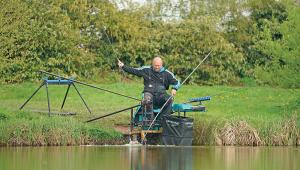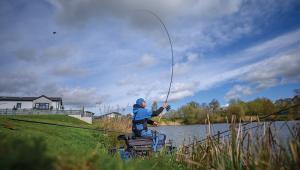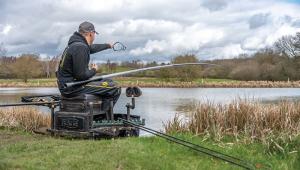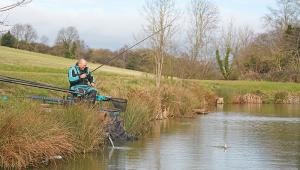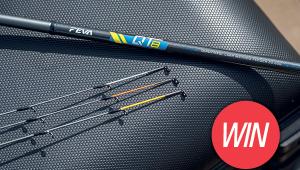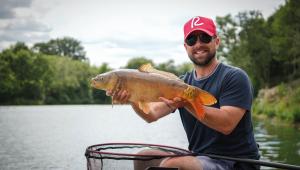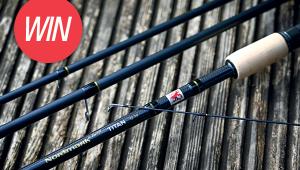Two Grains To Match Success!
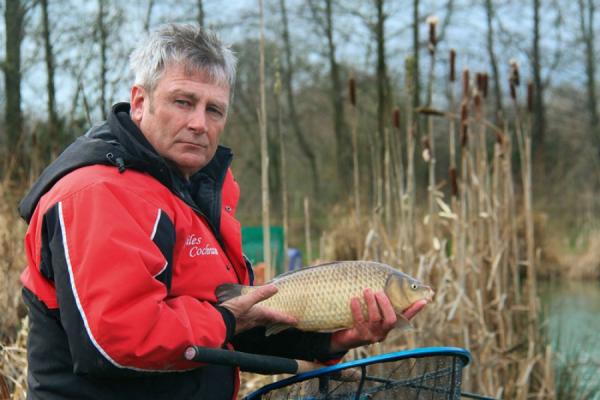
Thinking angler Giles Cochrane takes you through a simple yet deadly approach that just keeps on winning him matches!
When tackling any commercial in the winter there are a few basic approaches that work well and have done for years but, due to the popularity of certain methods, ultimately they lose their effectiveness. Perhaps it has more to do with the ease and convenience of the approach and the number of anglers using them that leads to fish wising up and becoming more difficult to catch.
The Method feeder and pole, for example, now result in much lower weights than they did in previous years and consequently, I seldom set up either through the winter. Chucking the Method through the summer does account for some respectable weights of fish but it’s nowhere near as effective as a straight lead and loose-feeding approach, simply because the fish have associated it with danger and have learned to avoid it. Not so with the lead, as fish have difficulty distinguishing between the loose feed and hook bait.
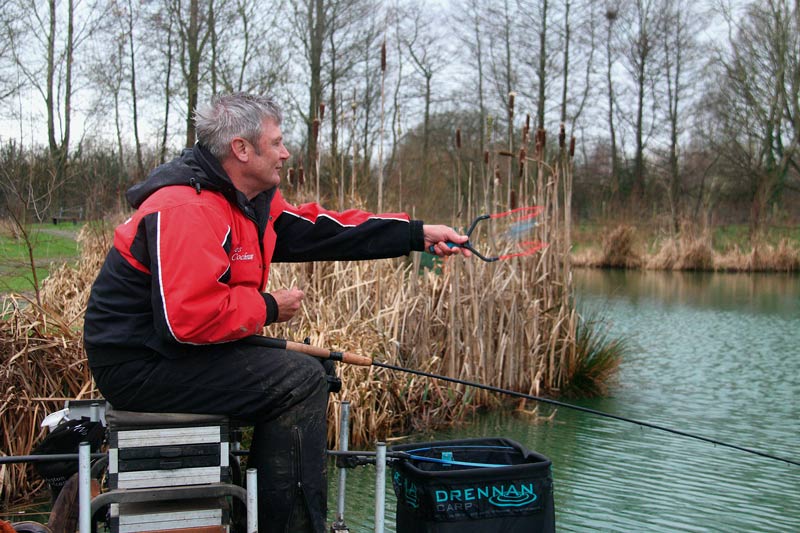
By feeding just two grains at a time...
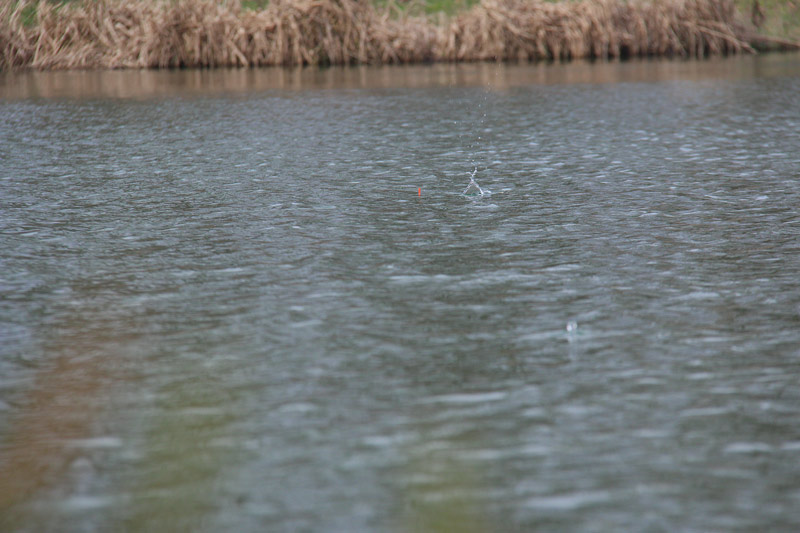
... You can avoid spreading your feed too far.
The solution then, when fishing winter matches on the same venues, is to revert to the straight lead, or so it would seem. However, the reality is somewhat different and fish such as F1s are not so keen to pull the tip round. The cause of this problem is due primarily to the number of fish competing in the peg, which means that in order to get wraparound bites on the lead, you need a lot of fish in your peg!
Fish do not often respond to large quantities of bait being chucked at them in winter, as we might be inclined to do in the summer to get them competing – quite the reverse actually. You will get the odd bite on the lead during the first half of the match but often wasting far too much time on a method that is not productive. For me, the solution to this problem is to fish the waggler and corn.
I accept that the pole is a good alternative approach, or at least it used to be but, as with all good methods, it loses its effectiveness, purely because fish seem to settle beyond the range of the pole in the colder months.
My theory on the subject of fishing the lead is that F1s pick up the bait, but eject it without us knowing, so the ultimate approach would be to fish the waggler as it is possible to see some indication that the bait is being sucked in.
The waggler and corn is not a new method and has been around for a long time but as very few people fish it, the fish have not wised up to it as quickly as with more popular methods. This is not an easy approach to master as F1 bites can be a nightmare to sort out but there are ways around this and this feature is based on putting fish in the net, when all other methods have failed. The bites you don’t see on the lead will show up as a twitch or some sort of indication on the waggler if you do it right.
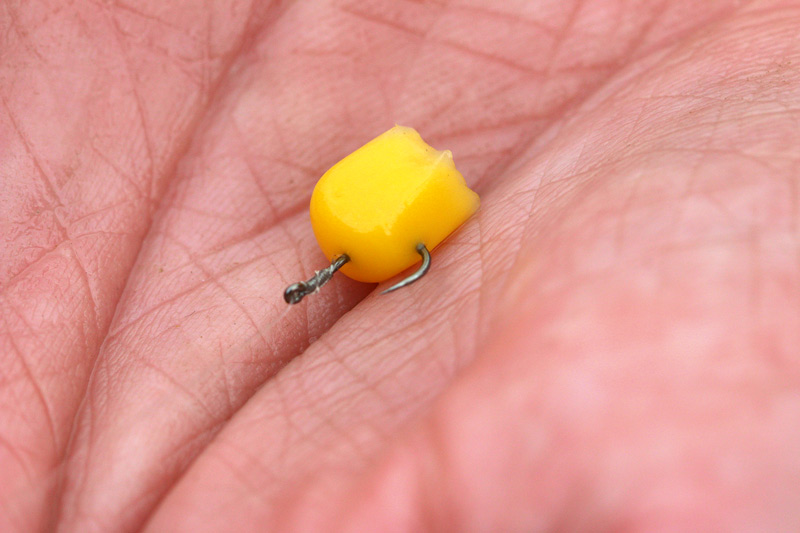
As with all baits, there's a right way and a wrong way of fishing corn.
To begin with, your basic approach should be based on how you would attempt to fish for silvers, so treat F1s like roach and you won’t go far wrong. I use inserted crystal wagglers up to 2g but mostly around 1 to 1.5g. The loaded ones are better as I don’t like to put too many big shot around the float and a few BBs are all you need. You need a float you can cast with ease so short pellet-waggler-type floats are no good for this as they are too short and catch most of the surface drift. You will need a static presentation and longer wagglers are ideal as most of the tow tends to be in the top six inches of water.
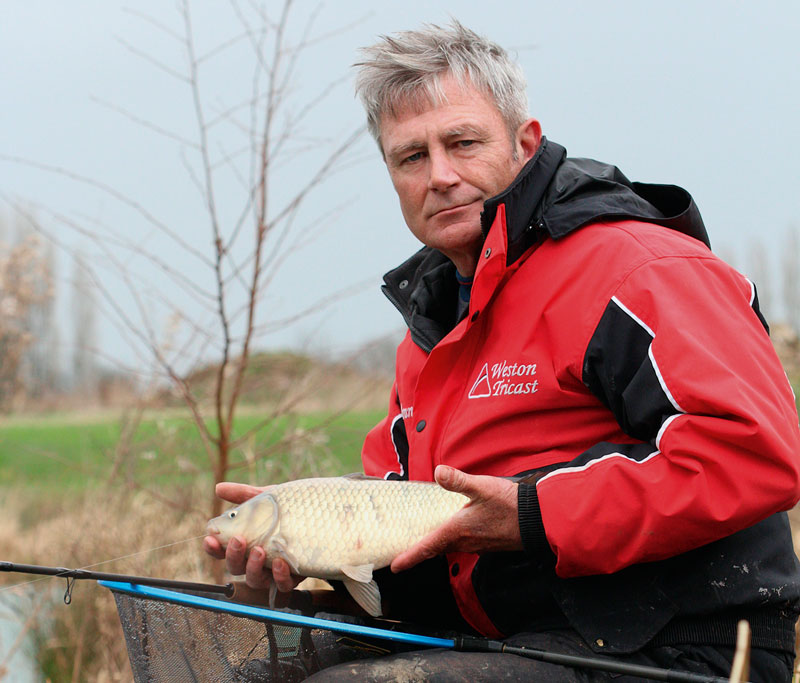
This is a great method for cold-waters F1s
I dot my floats right down in the water to reduce any drag caused by surface tow from crosswinds. Besides that, there are plenty of indications that you won’t see with an inch of waggler sticking out of the water.
To make this method work you need a low-diameter main line. Anything more than diameter 0.12mm will sink too deep, causing a belly to form, dragging your float offline, which will make bites impossible to hit. Everyone has their preferences when it comes to line so I’m not telling you to use anything other than sticking with what you have complete confidence in. Even 3lb (diameter 0.14mm) is far too heavy and believe me, you will miss far too many bites as a consequence.
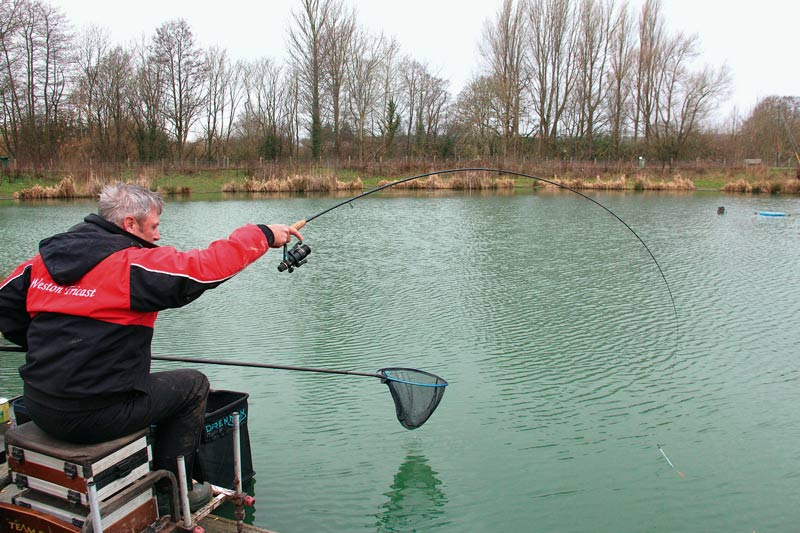
This is the rod action you're looking for...
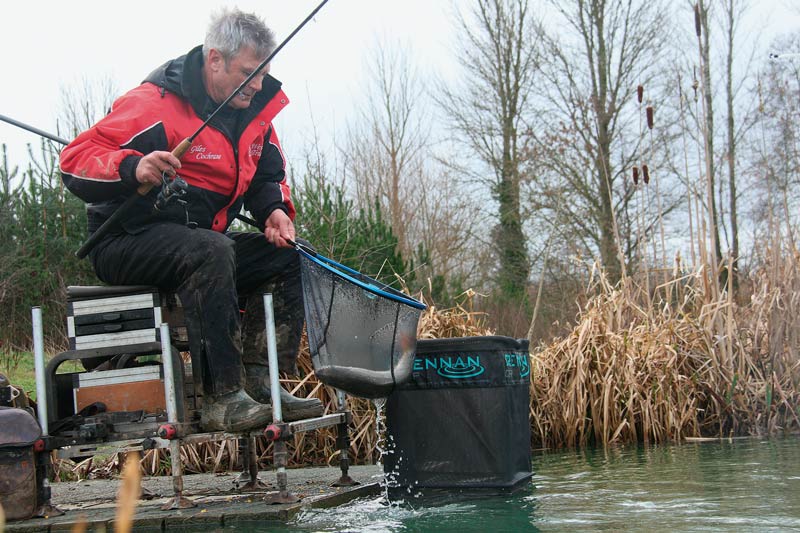
... to land more fish, not lose them!
An important aspect of making this approach work for you is the ability to sink the line effectively. I use Fairy Liquid and dilute it 50/50 with water. Spray this on your spool before the start and repeat when necessary. I give the reel handle a sharp turn and this is normally enough to sink the line. I would advise against sinking the rod to the butt and striking upwards as sound travels much further in water and is likely to have an effect on the fish… like scaring them witless within a five-peg radius!
Preparing Sweetcorn -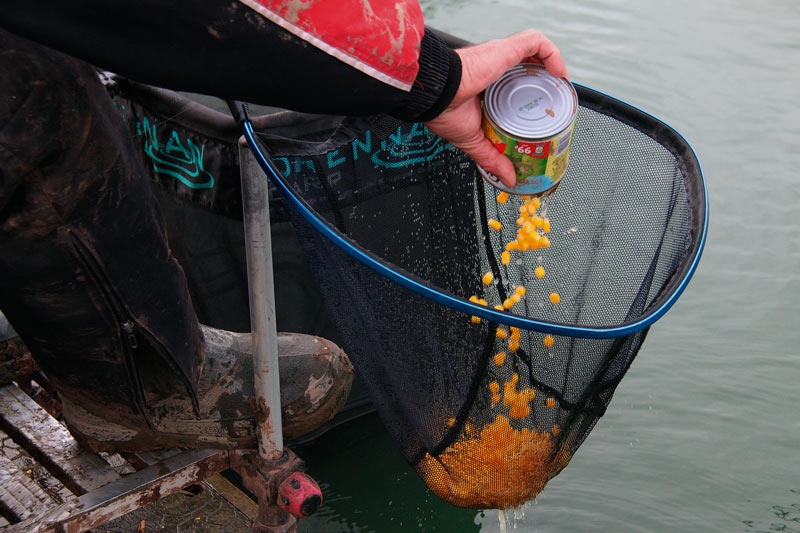
1. Tip it into your landing net - one tin should be enough
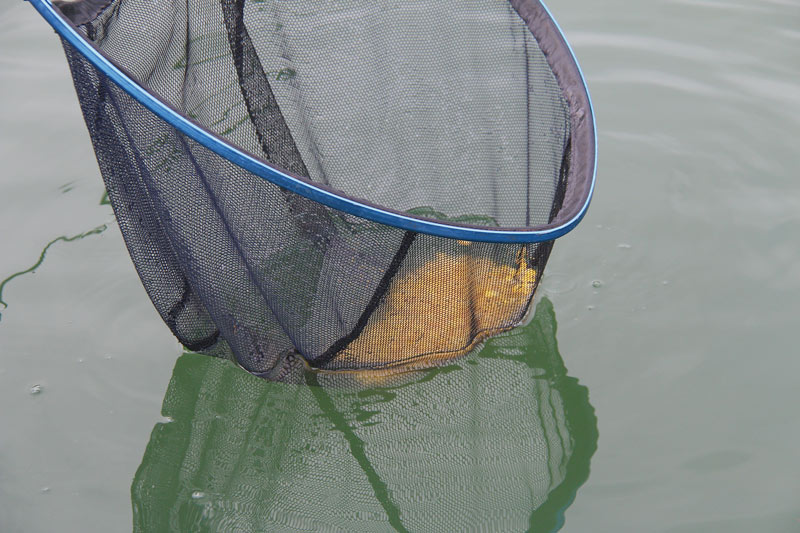
2. Give it a dunking to rinse the juice off
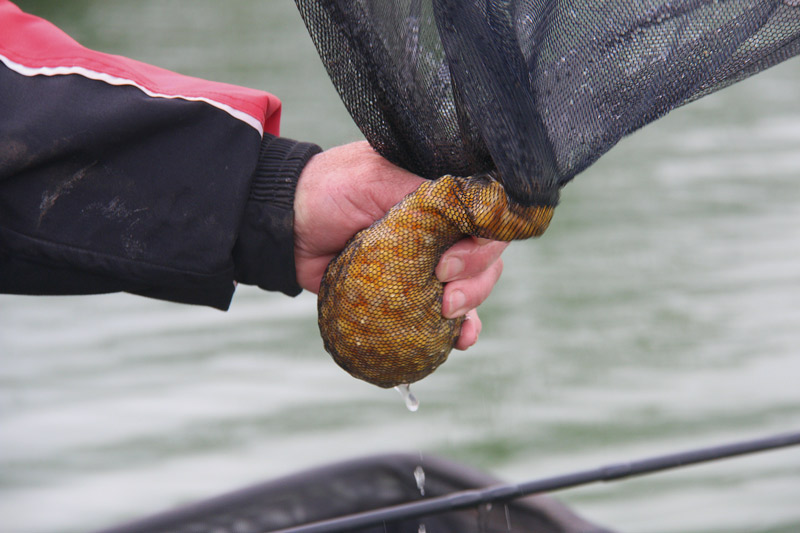
3. Gently squeeze off the excess water. Easy.
As for hooks, I tend to use size 18s and 20s as I think F1s eject the corn too quickly when they detect bigger hooks. I don’t think fish can see hooks but they certainly know when they’ve picked one up, much like you, eating your Sunday dinner with a hair in your mouth. By dotting the float right down and using smaller hooks, I have a far better chance of connecting with the bite.
As for rods, you can forget the shorter pellet-waggler designs as you will miss too many bites. People will dismiss this but it is only when you are drawn next to someone using a longer rod that you see the difference. Mostly, pellet-waggler rods are too stiff, which makes playing F1s and carp a lottery on smaller hooks. The rods I use I have designed myself for finesse-based approaches as I felt that there was nothing on the market that would give me the confidence to use the smaller hooks and lighter lines.
In effect, the rod should continue to bend to accommodate the size of the fish. Playing big fish effectively is down to the rod you use and stiffer rods, for me, cause more problems than they solve. It’s about putting more fish in the net than your opponents so use rods that will do this and not the opposite. Ideally, for all my carp and F1 fishing I use 12 to 13ft rods. Anything shorter is not viable and will affect my ability to land 99 per cent of what I hook.
The key to success, as with all methods, is feeding. It is possible to get bites consistently and all day long, while those around you are struggling, but corn is difficult to feed accurately. I never feed more than two grains at a time; firstly, because fish do not respond to the ‘carpet effect’ and will back away from large quantities of corn, and secondly, try feeding more than two grains and people around you start complaining that you are feeding their pegs.
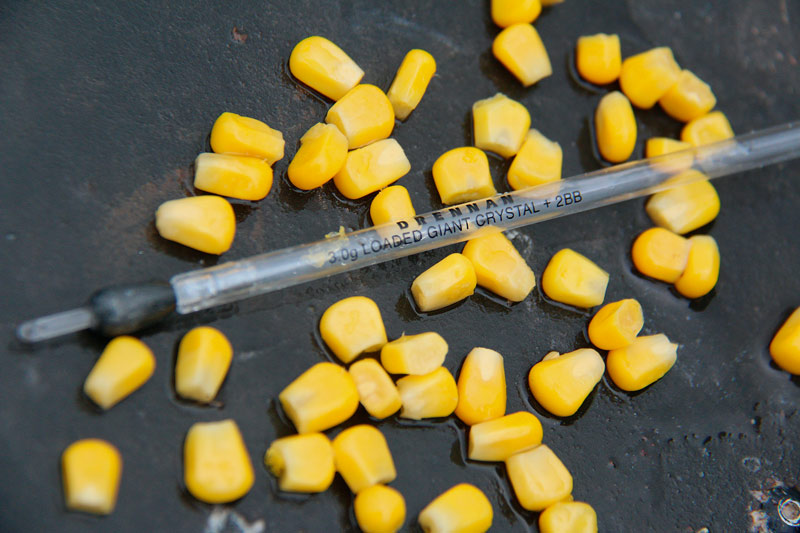
Giles favours long insert crystal wagglers for F1s...
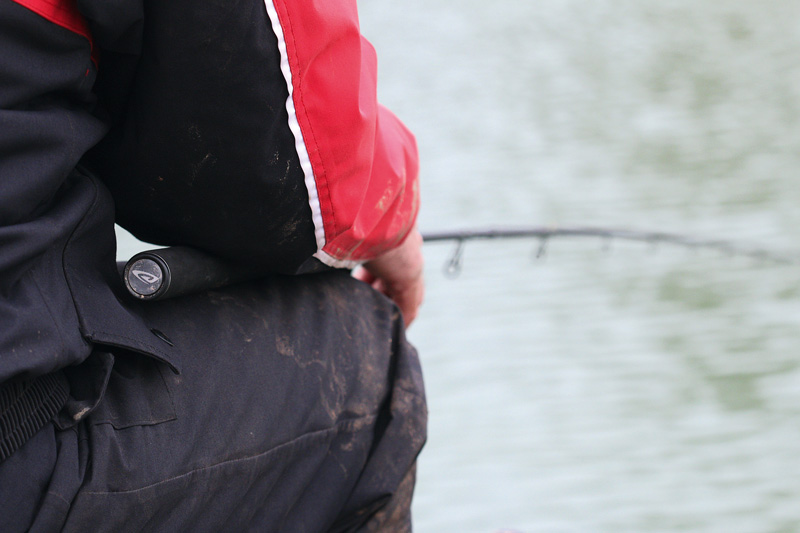
... and rods should be a minimum of 12 feet long.
The most effective way to build your peg is to feed two grains, wait 30 seconds, twitch the float and feed another two. This approach can be instant and I would normally expect to get bites by the second chuck. You need to keep the fish competing so I never exceed the amount of bait I started with. Keep it to two grains and you won’t go far wrong, drawing fish from anglers around you who are not catching on the pole.
After a few hours of doing this, you will start to miss bites as many of these bites are actually liners caused by too many fish in your peg. The last hour is when I normally chuck the lead as it can be devastating, but it’s the consistent feeding that eventually created this situation. About one tin of corn a match is all you’ll need but don’t be wasting your money on the expensive free range/Fairtrade nonsense. Tesco budget stuff is about 30p a tin and spot on for this.
One final word about this method – plumbing up! You will need to get this precise. I use a BB shot on the hook and I tend to cast out, sink the line and give the float about 10 seconds to appear. If it appears too quickly, you will be overdepth. If it doesn’t appear then add a few inches at a time until it does. Fishing overdepth with corn is never a good idea as you need to be able to detect the bait being sucked in, not spat out!
This is by no means an easy method to master but with some practice and by following these basic tips, it will result in far more bites and ultimately more fish in the net than those who sit it out on the pole or feeder. It works for me!
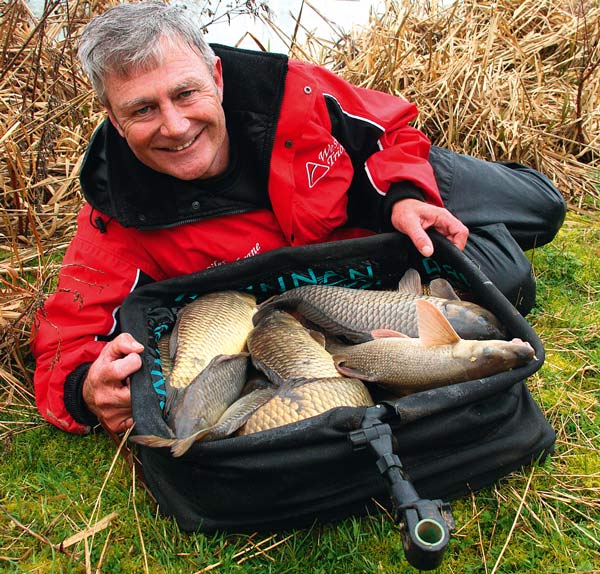 |
|
Get it right and the rewards are there for the taking.
Angler File -
Name: Giles Cochrane
Age: 50
Sponsors: Tri-Cast Weston Pools/Concept Design Rods
MF Says: The Angling Philosopher!
Venue -
Venue: Weston Pools
Location: Weston Cotton Farm, Weston Lane, Weston, Oswestry SY10 9ER
Website: www.weston-pools.co.uk
Number: 01691 671812
Like what you see?
Or buy a single issue
- Log in or register to post comments



